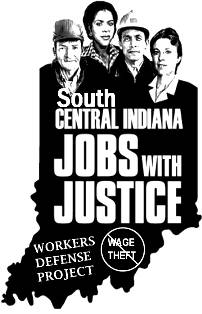On Friday February 8, Christopher Newfield, author of Unmaking the Public University and the blog, Remaking the University, traveled to Bloomington to contribute to the College of Arts and Humanities Institute roundtable at the Memorial Union. Before Newfield arrived at the Union the author attended a smaller gathering with Indiana University students billed as "The IU April Strike: Contexts and Considerations." On that afternoon student strike organizers and participants gathered in a Wylie Hall classroom to talk shop about the status of the public university and the upcoming student dissent on IU's campus.
From the beginning the meeting required an intersection between two different tones. On one side of the room stood Newfield, a relaxed professor accomplished with a pen, and on the other sat frustrated students unproven and poised to organize. Thus two very different moods and purposes merged within the same political space.
However, despite these differences as the room began to discuss the ills of neo-liberal market solutions, local corporate tax avoidance, California Proposition 13, and Governor Mike Pence, it became clear that Newfield stood among friends.
The Q and A quickly took on a pattern. Attendees would ask a question of Newfield. Newfield would give the answer that the questioner was reaching for and then follow up with an example from his experience in California. Heads would nod, and then Newfield would take the next question.
Every movement can use some external validation, and this strike is no exception. Furthermore by affirming certain truths about the state of public education, part of the discussion definitely served that function. But sitting there I had to ask myself: What new information did Newfield bring to the room that strikers could carry home with them to use in the next few months?
To me the answer is the way Newfield framed the problem that public university students face. Newfield asserted that the public university is now threatened by two significant myths. 1.) “There’s not enough public money,” and 2.) “The private market is the solution.” Both of these myths have been understood as truth, propagated by politicians, and then employed to justify the systematic disinvestment of Public Education by the state. That disinvestment is next passed on to the University Trustees who then implement tuition hikes, finally passing the burden on to students.
However, in recognition of these two primary myths Newfield pointed to two realities. First, using California as an example, he concluded that regardless of the economy's upturns, downturns, dips, and cliffs the state government has disproportionately decreased funding to public education. This defunding is independent of economic shifts. Second, citing the U.S. education gap in comparison to international competitors, Newfield asserted that the privatization schemes that politicians have hawked for the last 30 years have only lead to disastrous outcomes. Therefore the myths that legislatures have used to defend defunding like the floundering economy and the benefits of privatization are both FALSE.
Given these realities he stated that it is now the task of the activist and the striker to “demystify” fellow students and citizens of both policy pretenses, which have been used to justify defunding and the privatization of public universities by the Statehouse.
If it were up to Newfield the movement’s mantra would be, “There IS enough money to fund public education. Privatization doesn't work. We tried it. It failed.” Breath. “There IS enough money to fund public education. “Privatization doesn't work. We tried it. It failed.” Repeat.
But Newfield’s assessment didn’t stop there. The legislators at State House are not the only actors in this dynamic. The Board of Trustees also has a role to play. While it is true that the Trustees receive the State House's budget and then act in response, they are not faultless victims. Currently McRobbie and the Trustees emphasize their own neutrality in this political arrangement. They try to claim grace by blaming tuition hikes on the State and then citing their own efforts to mitigate these costs through various policies. However this posture is NOT enough. At some point the Trustees have to also put pressure on the legislature and declare that the state is an “unreliable partner,” and as Trustees they will not longer pass the State’s poor judgment onto the students through tuition hikes. The mantra is theirs too.
“There IS enough money to fund public education. Privatization doesn’t work. We tried it. It failed.”
Finally, the most important morsel a striker could have taken away from the discussion is a simple point. Newfield emphasized that historically when students have created disruption tuition hikes stop. Thus protest remains the most effective and accessible tool to stymy tuition increases. So as students we should use it. We’ve tried it. It works.
